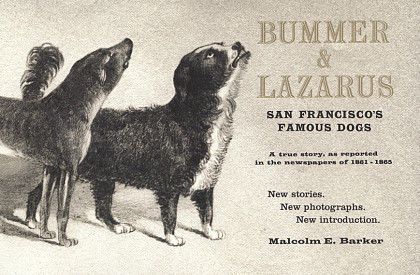|
New book
unravels the legend One
of San Francisco’s most endearing legacies is the story of Bummer and
Lazarus, two stray dogs that roamed the city streets in the 1860s. As
with many treasured tales, this one has been embellished over the years
and is now a blend of truths, half-truths, and far-fetched fabrication.
The original
story is simple enough. Bummer and Lazarus were strays and acknowledged
no master. They gained the respect and attention of San Franciscans
because of their expertise at killing rats and their unique bond of
friendship. Newspapers constantly reported their escapades, whether it
was stealing a bone from another dog or stopping a runaway horse. City
supervisors exempted them from a strict ordinance that banned dogs
downtown unless they had a leash and/or muzzle. When Lazarus died, one
newspaper ran a lengthy obituary entitled “Lament for Lazarus.”
While Bummer lay dying, the local papers vied with each other in
updating the news, and reporter Mark Twain added his characteristically
caustic commentary. |
